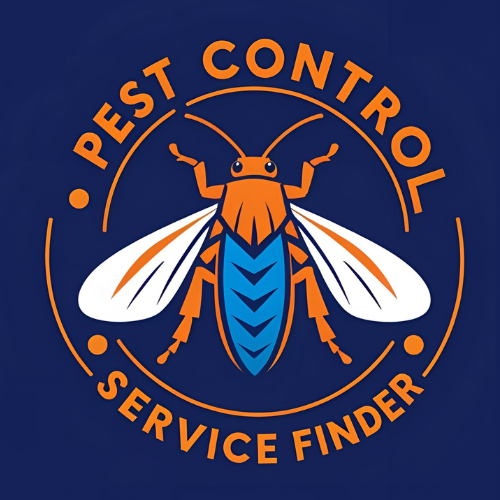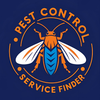Top Pest Control Services for Apartments | Tenant's Guide
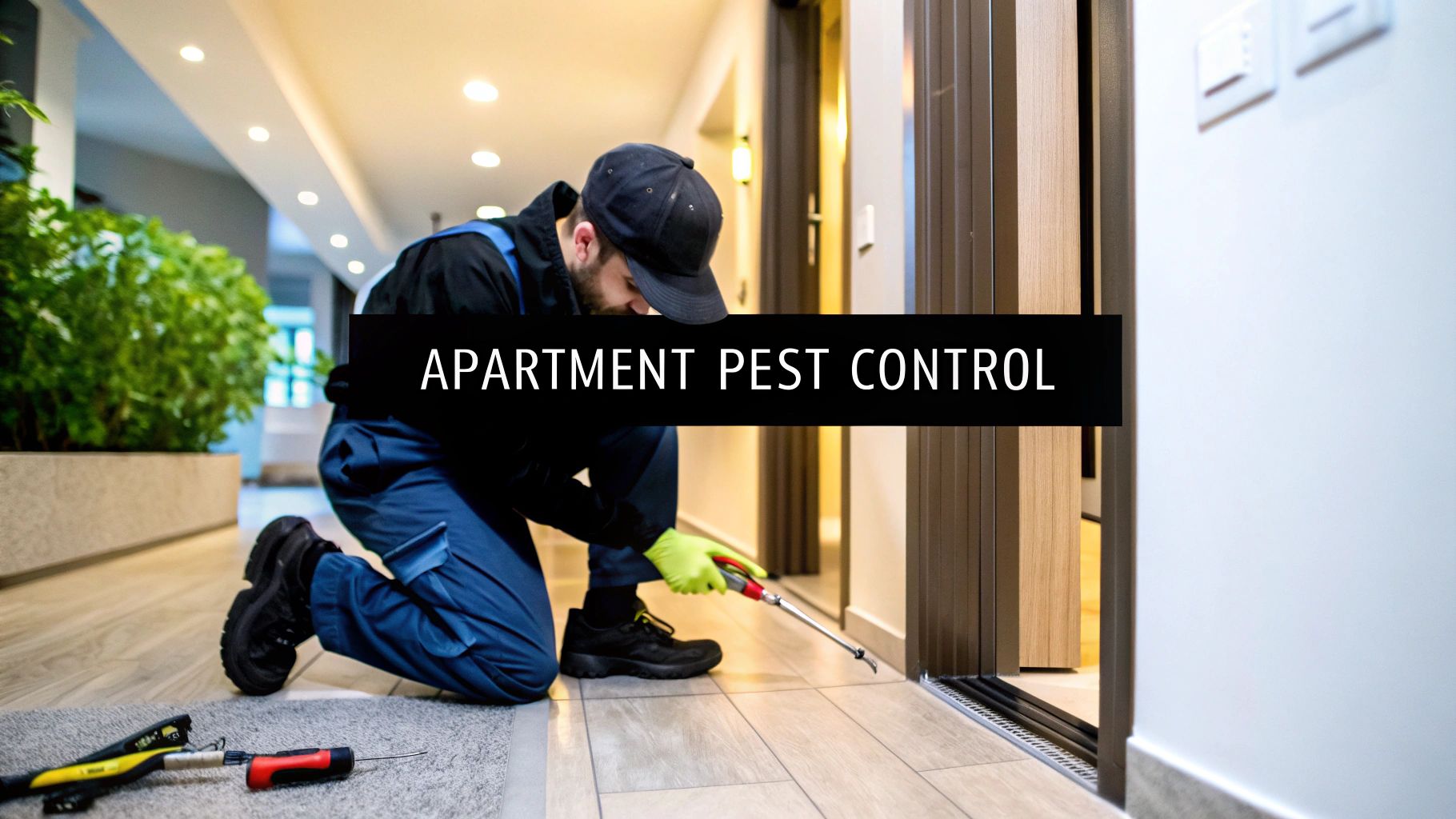
For immediate help with a pest problem in your apartment, call +1 855 224 3071 now. A specialist who knows the ins and outs of multi-unit buildings is ready to assist.
Pests in apartments aren't just a nuisance; they're a completely different beast. Thanks to shared walls, plumbing, and ventilation systems, a problem in one unit can quickly become a building-wide headache. Fast, smart action is the only way to get your space back.
Your Guide to a Pest-Free Apartment
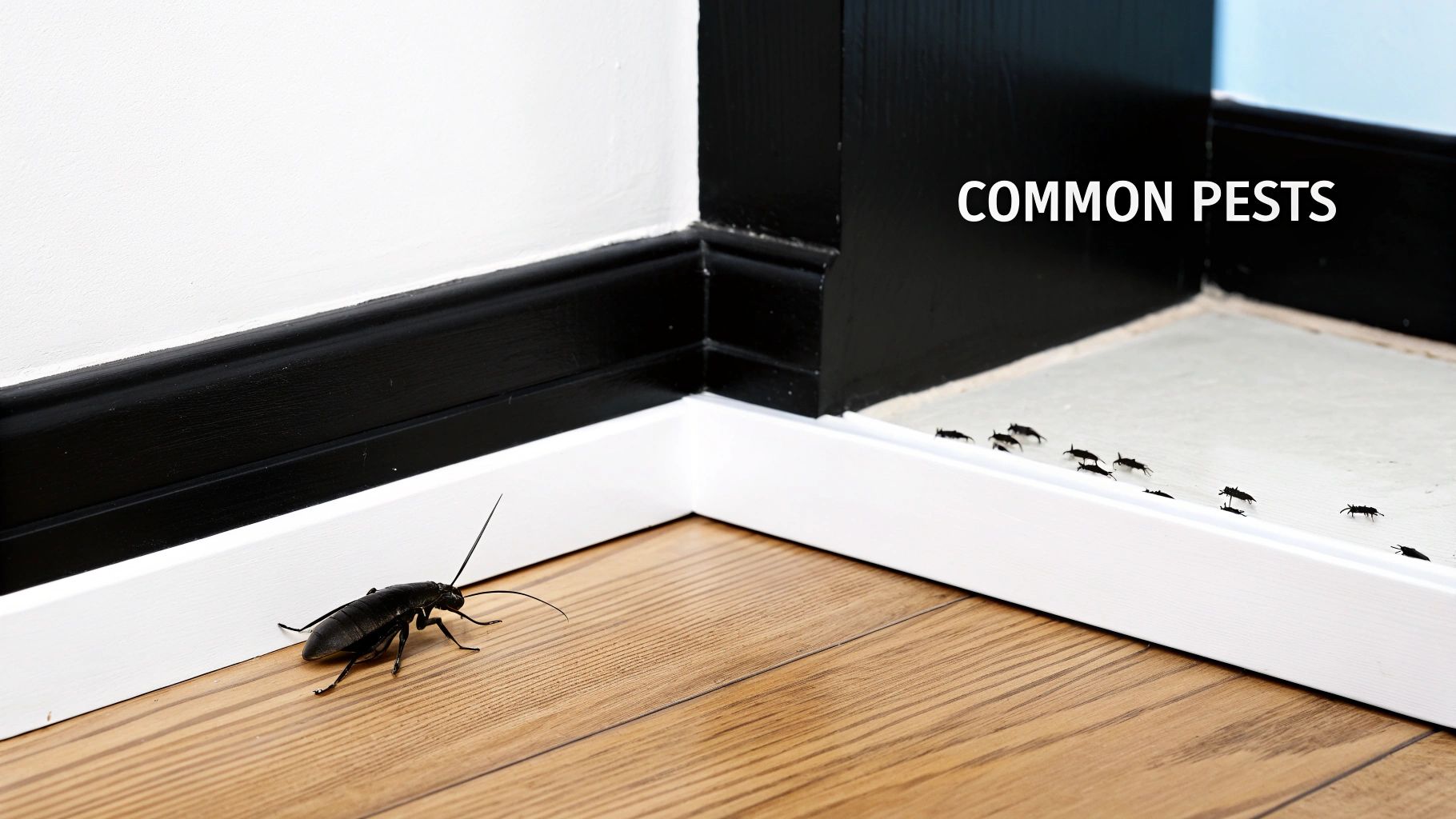
Finding pests in your apartment is a major hit to your sense of comfort and safety. It’s not like a single-family home where the problem is contained. In an apartment building, pests have superhighways—running through wall voids, along utility lines, and even through shared ventilation.
This guide is built for tenants who are stuck in this exact situation. We’ll walk you through how to figure out what you're dealing with, what your lease actually says about it, and how to work with your landlord to get it fixed for good.
If you're feeling overwhelmed and just want an expert opinion, don't wait. Call us at +1 855 224 3071 for a professional consultation.
Why Apartment Pest Control Is Different
You can’t just spray a can of bug killer and call it a day. That DIY approach in one apartment is usually just a temporary fix because the real source of the problem might be next door, upstairs, or in a common area like the trash chute.
Effective pest control services for apartments understand this. They know it takes a coordinated plan that often includes:
- Building-Wide Inspections: A pro needs to find the source of the infestation, which is rarely limited to just your unit.
- Coordinated Treatments: Treating your apartment is useless if your neighbor's place isn't also inspected and treated. This prevents the pests from just moving back and forth.
- Clear Tenant Communication: Your property manager should give clear instructions on how to get ready for treatment and what you need to do afterward to keep the pests gone.
A team effort between tenants, landlords, and pest control pros is the only way to keep an entire building pest-free. When everyone works together, everyone wins.
The need for this professional approach is huge and growing. The global market for residential pest control was valued at around USD 26 billion in 2025 and is expected to rocket to nearly USD 53.1 billion by 2035. This boom shows just how seriously people are taking the health risks associated with pests, especially in dense apartment settings.
Of course, your first line of defense is always keeping a clean and tidy home. The less clutter you have, the fewer places pests have to hide and breed. Good housekeeping makes your apartment a much less attractive target. There are some excellent guides for organizing small apartments effectively that can make a real difference.
Landlord Responsibilities And Tenant Rights
For help navigating a dispute with your landlord over pests, call +1 855 224 3071.
A pest problem is bad enough, but a fight with your landlord over it? That’s a nightmare. The big question is always the same: who’s footing the bill? The answer usually comes down to your lease and local laws, but here’s the general rule: landlords are required to provide a safe, livable home.
This is often called the "implied warranty of habitability," and it means they're on the hook for handling infestations, especially if you didn't cause the problem. Think about a building-wide roach issue stemming from cracks in the foundation or rodents getting in through common areas. That’s squarely on the landlord.
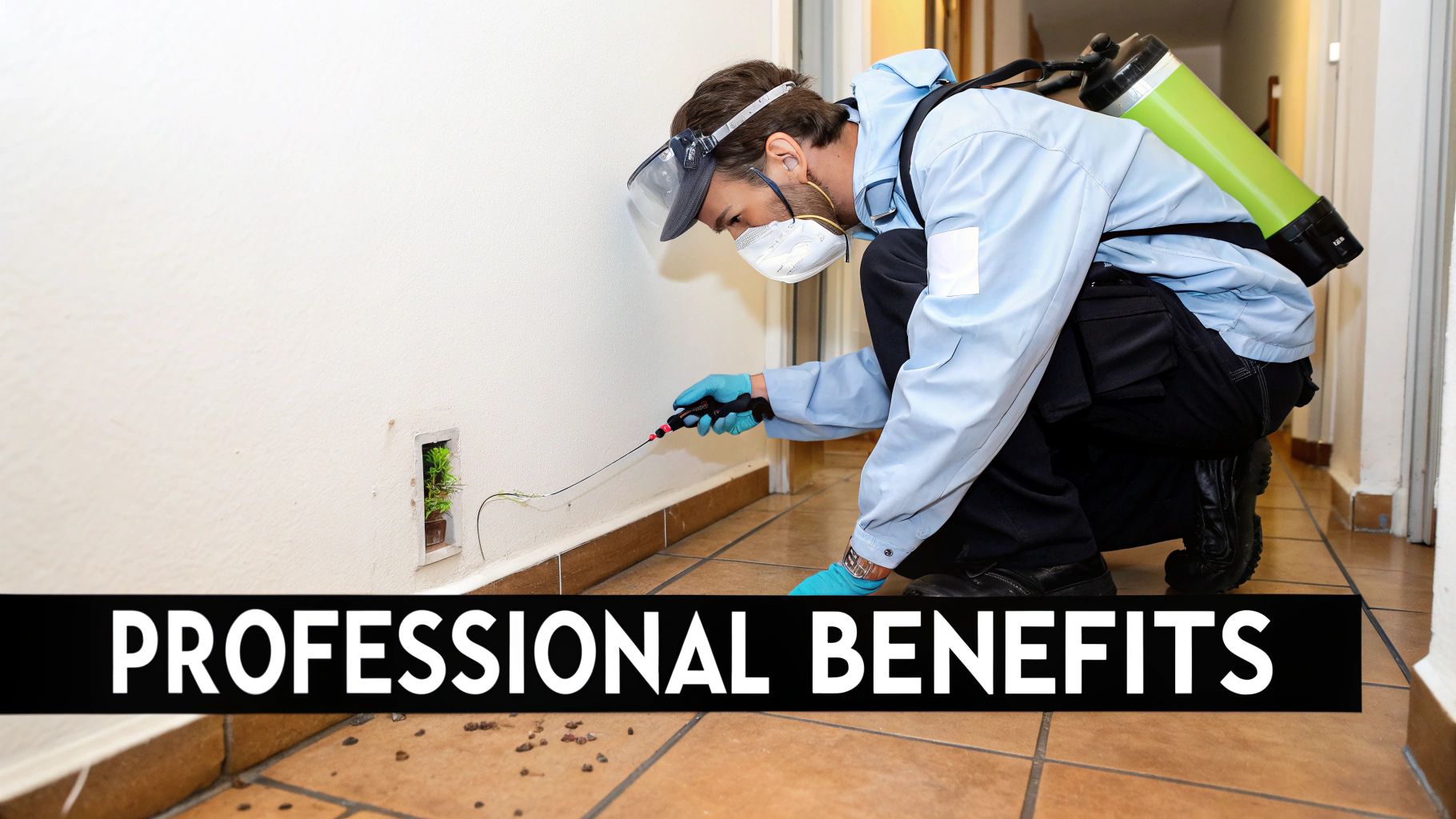
But, there's a flip side. If the infestation is a direct result of one tenant's actions—like leaving garbage and food out all the time—the responsibility can shift. Almost every lease includes a clause that says you have to keep your place clean for this very reason.
Your Action Plan For Reporting Pests
The moment you see a pest, your best defense is documentation. A quick phone call is easy to forget or deny, so you need to create a solid record.
- Take Dated Photos and Videos: Get clear shots of the pests themselves, any droppings, nests, or damage they've caused. Make sure your phone's timestamp is on.
- Write Everything Down: Start a log. Every time you see something, jot down the date, time, location, and what kind of pest it was. This timeline is incredibly powerful.
- Send Formal Written Notice: Fire off a polite but firm email or even a certified letter to your landlord. Clearly state the problem, attach your evidence, and formally request professional pest control services for apartments.
This paper trail proves you did your part and reported the issue correctly. If your landlord drags their feet, this documentation becomes your leverage. And if you're getting nowhere, call +1 855 224 3071 to connect with experts who can guide you.
A word of caution: Never withhold rent unless you are absolutely certain about your local tenant-landlord laws. This can backfire and lead straight to eviction. Stick to clear communication and solid documentation to get your landlord to take action.
When The Problem Is Bigger Than Your Unit
Smart landlords often use a strategy called Integrated Pest Management (IPM). It’s a commonsense approach that prioritizes long-term prevention over just spraying chemicals. You can learn more about what Integrated Pest Management involves in our detailed guide. This is especially critical in apartment buildings, where pests can easily travel from one unit to another through the walls and pipes.
Your landlord’s responsibility doesn’t stop at your front door. They need to tackle the root cause, which might mean treating your neighbors’ apartments, the laundry room, or other common areas. For property managers looking for more information, there are many excellent landlord resources available online. Any good pest control pro will assess the whole building and recommend a comprehensive plan if they see signs of a wider issue.
Finding the Right Pest Control Service
When you’ve got a pest problem in an apartment, your first move should be to call +1 855 224 3071. Here's why: not just any pest control company will do. You need one that gets the unique challenges of multi-family buildings.
Choosing the wrong team is a recipe for disaster. A botched treatment doesn't just fail in your apartment; it can push the problem right into your neighbor's place.
Think about it—pests don't respect drywall. They travel through shared walls, plumbing, and vents. A technician who only sprays your unit is just putting a temporary band-aid on a much bigger issue. The only real fix is a building-wide strategy.
For some help finding qualified local pros who understand this, check out our guide on finding pest control services near you.
Vetting a Qualified Provider
So, how do you spot a pro? An experienced company will always kick things off with a detailed inspection of your apartment and probably the ones next door, too. They need to figure out exactly what pest you're dealing with, how they're getting in, and just how bad the infestation is before they even talk about treatment.
A huge clue to their expertise is their track record with buildings like yours. Just as you'd review a contractor's portfolio of work on apartment complexes before a big job, you should look for proof they know their way around multi-unit properties.
The best pest control services for apartments don't just show up and spray. They use a smarter approach called Integrated Pest Management (IPM). This means they combine targeted, minimal-chemical treatments with long-term prevention, like sealing up entry points and giving you advice on sanitation.
This IPM strategy is way better for everyone's health and actually solves the problem for good. If you want to connect with a vetted professional who specializes in this, call +1 855 224 3071.
The need for pros like this is massive. The residential pest control market in North America is huge, projected to make up over 37% of the global revenue by 2025. That's a staggering USD 9.48 billion. With more and more people living in urban apartments, the demand in the United States is a major driver of that growth.
How to Prepare Your Apartment for Treatment
To get professional advice on preparing your apartment for treatment, call +1 855 224 3071.
Here’s something most people don’t realize: the success of professional pest control services for apartments is a team effort. Your preparation is just as crucial as the technician’s expertise. When an apartment is prepped correctly, treatments can get into all the hidden cracks and crevices where pests love to hide. This maximizes the treatment’s impact and gets you faster results.
Following the prep instructions from your pest control company isn't just a friendly suggestion—it’s a critical part of the process. If you skip steps, the treatment might not work, leading to more visits, more cost, and more hassle. Plus, it's the best way to keep your personal belongings safe from any products being used.
The specific steps you need to take will change depending on what pest you’re dealing with. Getting ready for a bed bug treatment, for instance, is a whole different ballgame than prepping for ants. Always, always follow the specific instructions your provider gives you.
But to get you started, here are some general tips for different rooms in your apartment. If you hit a snag or have a question, your best bet is to get an expert on the phone by calling +1 855 224 3071.
Kitchen and Pantry Prep
The kitchen is usually ground zero for pests like roaches and ants. It’s a buffet with easy access to food and water.
- Empty Everything: Take all your food, dishes, and cookware out of the cabinets and drawers. This gives the technician unobstructed access to treat the surfaces where pests travel and build their nests.
- Seal Up Food: Put all open food into airtight containers or move it into the fridge. Don't forget things sitting on the counter, like fruit bowls or that loaf of bread.
- Deep Clean: Wipe down every surface—countertops, shelves, the inside of cabinets—to get rid of any crumbs or grease. Make sure to pull appliances like the stove and refrigerator away from the wall to clean behind and underneath them. You'd be shocked at what builds up back there.
Bedroom and Living Area Prep
For pests like bed bugs or fleas, prepping your living and sleeping areas is absolutely essential. It’s a pretty involved process, so for a full breakdown, check out our complete guide on how to prepare for pest control.
- Wash All Fabrics: Strip your bed and wash all bedding, curtains, and clothes in hot water. Then, dry everything on the highest heat setting. Once clean, seal it all in fresh plastic bags to keep pests from getting back in before the treatment is done.
- Move Furniture Away From Walls: Pull all your furniture about a foot away from every wall. This creates a clear path for the technician to treat the baseboards and room perimeter, which are common pest highways.
- Declutter the Floors: Clear the floors of absolutely everything—toys, books, shoes, storage bins. An open, uncluttered space means the treatment can be applied thoroughly and effectively.
To give you a clearer idea of what’s involved for different invaders, here’s a quick comparison.
Apartment Prep Guide by Pest Type
| Pest Type | Essential Prep Tasks | Key Safety Precaution |
|---|---|---|
| Roaches | Empty kitchen cabinets, deep clean under appliances, seal all food. | Store food in the fridge or airtight containers to prevent contamination. |
| Ants | Wipe down all surfaces to remove food trails, remove trash. | Keep pets and children away from treated areas until they are fully dry. |
| Bed Bugs | Launder all fabrics in hot water, declutter rooms, move furniture from walls. | Bag and seal all laundered items to prevent re-infestation before treatment. |
This table shows how prep work can range from a focused kitchen clean-up for roaches to a full-blown laundry and decluttering mission for bed bugs.
Think of it this way: Proper preparation is your half of the job. A pest control professional can only be as effective as the access you provide. Taking these steps seriously ensures you get the best possible results from the service.
Still weighing your options? This graphic clearly shows the advantages of bringing in a pro versus trying to handle it yourself.
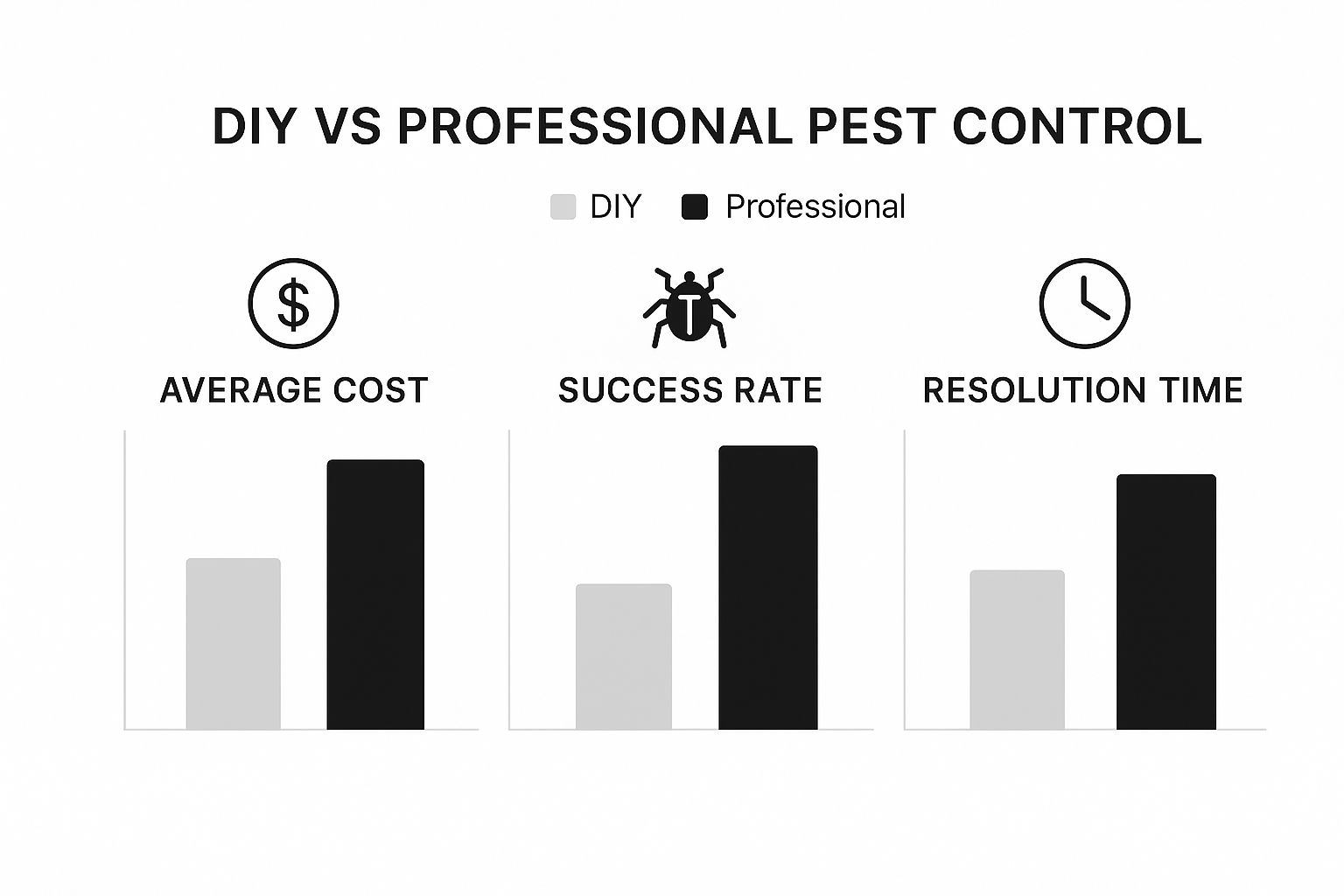
As the numbers show, professional services deliver a much higher success rate in way less time, which ultimately gives you better value and, more importantly, peace of mind. For results you can count on, call +1 855 224 3071 to connect with a vetted expert.
If you have any questions after the treatment or need to schedule a follow-up, call +1 855 224 3071 to talk with an expert. The job doesn't stop when the technician leaves your apartment—knowing what comes next is key to making sure the treatment sticks.
First, you need to know when it's safe to go back inside. Your technician will give you clear instructions on how long you, your family, and any pets need to stay out. This can be anywhere from a few hours to a full day, all depending on the products they used. Do not re-enter before this time is up. You need to let everything fully dry and settle.
Once you get the all-clear, open your windows and let the place air out for at least 30 minutes. This helps get rid of any lingering smells from the treatment.
Knowing the Treatment Is Working
Don't panic if you see more pests right after the treatment. This is actually a good sign. It means the products are working, flushing them out of their hiding spots and into the open.
Soon after, you should start finding dead pests—the clearest sign of success. One pro tip: hold off on deep cleaning for a bit. Avoid mopping or wiping down baseboards and corners for at least a week or two. You don't want to remove the residual barrier that's still working to eliminate pests.
Keep in mind that for tough pests like roaches or bed bugs, one treatment is rarely a silver bullet. Their life cycles mean you'll likely need follow-up visits to catch newly hatched pests. If you're still seeing live pests after a week, call +1 855 224 3071 to figure out the next steps.
Long-Term Prevention and Maintenance
Now that your apartment has been treated, the goal is to keep pests from returning. This is a team effort between you and your property manager.
- Seal Entry Points: Look for small cracks and gaps around pipes, windows, and baseboards. A simple line of caulk can block off these pest highways.
- Smart Food Storage: Keep all food (including pet food) in airtight containers. Always clean up crumbs and spills right away.
- Reduce Clutter: Pests thrive in clutter. Keeping your apartment tidy removes their hiding places and makes it much harder for them to move back in.
The global demand for professional pest control services for apartments is growing, especially in cities. The Asia-Pacific region is actually the fastest-growing market, expected to hit around USD 6.15 billion by 2025. This surge is thanks to smart strategies like Integrated Pest Management (IPM), which pairs treatments with preventative measures like the ones above. You can read the full research on global pest control trends to learn more about how the industry is adapting.
Struggling with pests in your apartment and need answers now? For direct help from a specialist, call +1 855 224 3071. We've pulled together the most common questions we hear from tenants dealing with infestations in multi-unit buildings, giving you clear, straightforward information to get through it.
Frequently Asked Questions
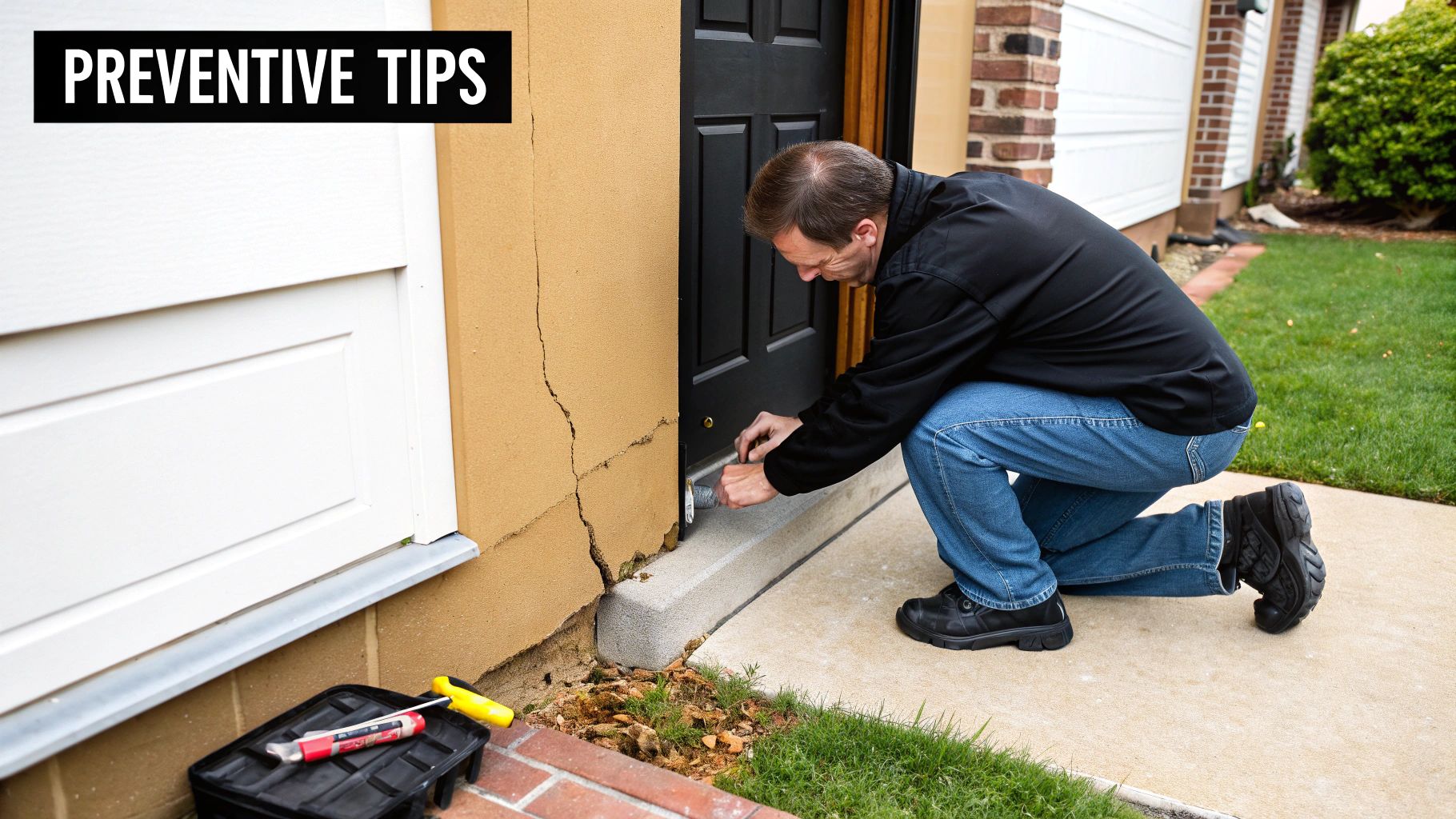
Here are the direct answers to the top questions and worries tenants have when pests show up in an apartment. Use this to handle the situation confidently and know what to expect.
Are The Treatments Safe For My Pets And Children
This is always the first question, and for good reason. Any reputable pest control service for apartments puts safety first by using Integrated Pest Management (IPM) strategies. This isn't about spraying harsh chemicals everywhere; it’s about targeted, low-toxicity products applied precisely where they're needed.
A true professional will always tell you exactly what products they're using and give you clear instructions, like how long to keep kids or pets out of a treated area. Many services today offer fully eco-friendly and pet-safe options if you ask.
Always, always bring up your concerns before treatment starts. If you need a hand finding a service that specializes in family-safe methods, call +1 855 224 3071 to get connected with a local pro who gets it.
How Long Will It Take To Completely Get Rid Of The Pests
The timeline for getting rid of pests for good really depends on a few key things: the type of pest, how bad the infestation is, and whether it’s just in your unit or has spread through the building.
- Minor Issues: A small trail of ants might be knocked out in just one visit.
- Major Infestations: Tougher pests like cockroaches or bed bugs in an apartment building almost always need a multi-step treatment plan. This can take several weeks, sometimes months, to fully fix, especially if neighboring apartments are also involved.
A professional technician can give you a much more realistic timeline after they’ve done an initial inspection.
One of the biggest mistakes tenants make is expecting a long-term problem to disappear overnight. Pests like bed bugs have complex life cycles, and a proper eradication plan has to hit them at every single stage—from egg to adult.
What If The Pests Are Coming From My Neighbors Apartment
This is an incredibly common—and awkward—situation in apartment living. Your first and most important move is to notify your landlord or property manager in writing. Get it on record.
It is their legal responsibility to deal with problems that impact the entire building, and an infestation spreading between units definitely qualifies. Avoid confronting your neighbor directly; it rarely helps and often just creates tension. The property manager is the one who needs to investigate and coordinate inspections or treatments for multiple units.
Keep detailed notes of every conversation and everything you see. This paper trail is crucial for ensuring the problem is handled properly and holds management accountable. If you feel like you're being ignored, don't wait—call +1 855 224 3071 for advice on next steps.
Will One Treatment Be Enough To Solve The Problem
For most serious infestations in a shared building, a one-and-done treatment is just wishful thinking. Pests like rodents, bed bugs, and cockroaches are resilient and have life cycles that demand follow-up visits.
Those return visits are critical for wiping out newly hatched pests that weren't affected by the first round of treatment. A legitimate pest control plan for an apartment should always include the initial service followed by at least one or two follow-up appointments to make sure the pests are gone for good and don't come roaring back.
When you're facing a pest problem, you need fast, reliable help from pros who know the ins and outs of apartment buildings. Pest Control Service Finder connects you 24/7 with local, vetted exterminators ready to help. Get peace of mind with same-day service, transparent pricing, and child- and pet-safe treatments. Reclaim your home today by visiting https://pestcontrol-service-finder.com.
